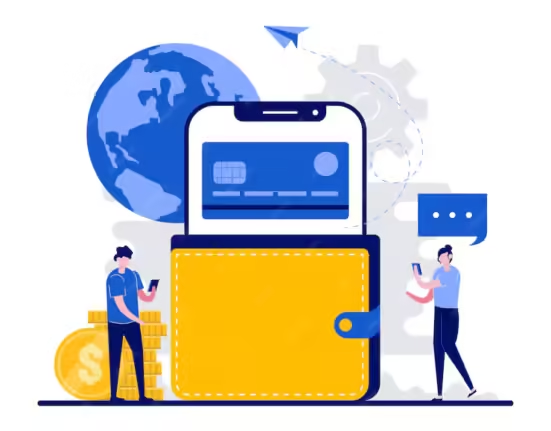Referral programs are a powerful way for businesses to harness the influence of satisfied customers to attract new clients. When done right, referral programs can be a cost-effective method to increase brand awareness, customer loyalty, and sales. In this article, we’ll explore the fundamentals of referral programs, their benefits, and how to design and implement one that drives significant results.
Understanding Referral Programs
A referral program is a marketing strategy that incentivizes existing customers to refer new customers to a business. This word-of-mouth marketing approach leverages the trust and relationships your customers have with others, making it one of the most credible forms of promotion.
How Referral Programs Work
Referral programs work by rewarding both the referrer (the existing customer) and the referee (the new customer) for participating in the program. The reward could be anything from discounts and free products to cash incentives or loyalty points. The key is to make the reward appealing enough to motivate customers to take action.
Benefits of Referral Programs
Referral programs offer several benefits for businesses, including:
- Cost-Effective Customer Acquisition: Acquiring new customers through referrals is often cheaper than traditional marketing channels because you leverage existing relationships.
- Higher Conversion Rates: Referred customers are more likely to convert because they trust the recommendation from someone they know.
- Increased Customer Loyalty: Referral programs can strengthen relationships with existing customers by making them feel valued and appreciated.
- Viral Growth Potential: A successful referral program can create a ripple effect, where one referral leads to another, resulting in exponential growth.


Designing an Effective Referral Program
To create a referral program that resonates with your customers and drives results, you need to consider several key factors. Let’s dive into the steps involved in designing an effective referral program.
1. Define Your Goals
Before launching a referral program, it’s important to define clear goals. What do you want to achieve with your program? Common goals include:
- Increasing Customer Acquisition: Bringing in new customers through referrals.
- Boosting Sales: Encouraging existing customers to make additional purchases or upgrade their services.
- Enhancing Customer Loyalty: Strengthening relationships with existing customers by offering rewards.
2. Understand Your Audience
To create a referral program that appeals to your customers, you need to understand what motivates them. Consider the following:
- Customer Preferences: What types of rewards would your customers find most valuable? For some, discounts might be appealing, while others might prefer cash rewards or exclusive access to new products.
- Customer Behavior: How likely are your customers to refer others? Are they satisfied with your product or service? Understanding these factors will help you design a program that aligns with your customers’ needs and behaviors.
3. Choose the Right Incentives
The success of your referral program largely depends on the incentives you offer. The rewards should be compelling enough to encourage participation but also sustainable for your business. Here are some popular incentive options:
- Discounts: Offer a percentage off the next purchase or a set dollar amount off a future order.
- Cash Rewards: Provide a cash incentive for each successful referral.
- Free Products or Services: Give referrers a free product, service, or upgrade as a reward.
- Loyalty Points: Award points that customers can accumulate and redeem for rewards.
- Exclusive Access: Offer early access to new products, services, or special events.
4. Simplify the Process
The easier it is for customers to refer others, the more likely they are to participate. Simplify the referral process by:
- Creating a User-Friendly Interface: Design a referral page that’s easy to navigate, with clear instructions and minimal steps.
- Providing Shareable Links: Offer unique referral links that customers can easily share via email, social media, or messaging apps.
- Automating the Process: Use referral software to automate tracking, rewarding, and communication, ensuring a seamless experience for both referrers and referees.
5. Promote Your Referral Program
Even the best-designed referral program won’t succeed if customers don’t know about it. Promote your program through various channels to maximize participation:
- Email Campaigns: Send targeted emails to your existing customers, highlighting the benefits of the referral program and encouraging them to participate.
- Social Media: Leverage your social media platforms to spread the word about your referral program. Create engaging posts and use hashtags to increase visibility.
- Website Integration: Feature your referral program prominently on your website, including on the homepage, product pages, and in the customer account area.
- In-Store Signage: If you have a physical location, use signage to promote your referral program to customers in-store.
Measuring the Success of Your Referral Program
Once your referral program is up and running, it’s important to track its performance and make adjustments as needed. Here are some key metrics to monitor:
1. Referral Rate
The referral rate measures the percentage of customers who participate in your referral program. A high referral rate indicates that your program is appealing and easy to use, while a low rate may suggest that your incentives or processes need improvement.
2. Conversion Rate
The conversion rate tracks how many of the referred customers actually make a purchase or take the desired action. A high conversion rate suggests that your program is attracting quality leads, while a low rate may indicate a need to adjust your targeting or messaging.
3. Customer Acquisition Cost (CAC)
Customer acquisition cost is the total cost of acquiring a new customer through your referral program, including the cost of incentives. Compare this cost to other marketing channels to determine the cost-effectiveness of your referral program.
4. Lifetime Value (LTV) of Referred Customers
The lifetime value of referred customers measures the total revenue generated by these customers over their entire relationship with your business. Referred customers often have a higher LTV than those acquired through other channels, making this a key metric to monitor.
5. Return on Investment (ROI)
Return on investment calculates the overall profitability of your referral program. To determine ROI, subtract the total costs of running the program from the total revenue generated, then divide by the total costs. A positive ROI indicates that your program is delivering value to your business.
Optimizing Your Referral Program
Even a successful referral program can benefit from continuous optimization. Here are some tips for improving your program over time:
1. Gather Feedback
Regularly ask your customers for feedback on the referral program. This can help you identify pain points, areas for improvement, and new incentive ideas that resonate with your audience.
2. Test Different Incentives
Experiment with different types of incentives to see what works best for your audience. A/B testing can help you determine which rewards drive the most referrals and conversions.
3. Analyze Customer Segments
Segment your customer base and analyze which groups are most active in the referral program. Use this information to tailor your marketing efforts and incentives to different segments for maximum impact.
4. Adjust Promotion Strategies
If participation in your referral program starts to decline, revisit your promotion strategies. Try new marketing channels, update your messaging, or offer limited-time bonuses to reignite interest.
5. Recognize Top Referrers
Show appreciation for your most active referrers by recognizing them publicly or offering additional rewards. This can motivate others to participate more actively and create a sense of community around your brand.
Conclusion
Referral programs are a powerful tool for businesses looking to grow their customer base through the power of word-of-mouth marketing. By understanding your audience, offering compelling incentives, and continuously optimizing your program, you can create a referral program that drives significant results for your business. With the right approach, your satisfied customers can become your best advocates, helping you achieve sustained growth and success.









Leave feedback about this